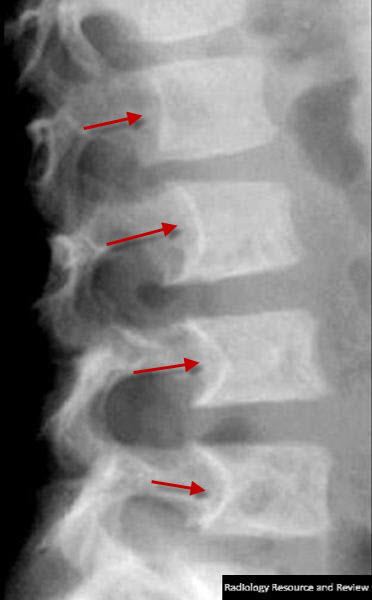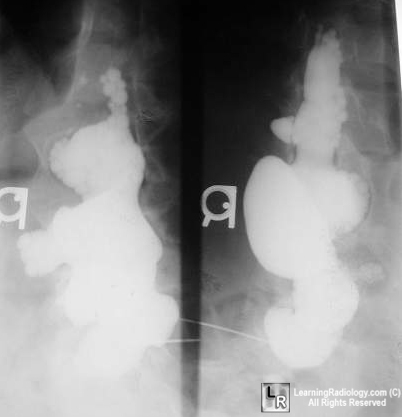|
|
Vertebral Scalloping
General Considerations
- Uncommon
- There is a slight posterior concavity normally present in most vertebral bodies
- Exaggerated concavity in one or more vertebral bodies, most often occurring posteriorly than anteriorly
Causes of Posterior Scalloping
- Neurofibromatosis
- Either from dural ectasia or neurofibroma
- Intraspinal mass, such as ependymoma
- Elastic tissue disorders, such as Marfan Syndrome
- Achondroplasia
- Acromegaly
- Mucopolysaccharidoses
Causes of Anterior Scalloping
- Abdominal aortic aneurysm
- Lymphadenopath6y (very rare)
Imaging Findings
- Seen in lateral projection as one or more exaggerated concavities anteriorly or posteriorly

Posterior Vertebral Scalloping, Neurofibromatosis. There are exaggerated concavities of almost all of the lumbar vertebral bodies posteriorly (red arrows) in a patient with neurofibromatosis. The scalloping may be due to dural ectasia (more commonly) or neurofibromas themselves.

Dural Ectasia in Neurofibromatosis. Causes posterior scalloping of the vertebral bodies in part due to the pulsations of the cerebrospinal fluid. This is a pyelogram which shows large dural sacs in both oblique projections.
Signs in Imaging: The Posterior Vertebral Scalloping Sign. SL Wakely. Radiology, May 2006, Vol. 239, Issue 2.
|
|
|